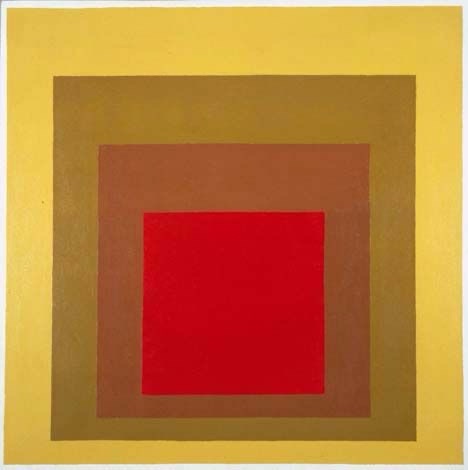Vittorio Colaizzi at Two Coats of Paint lays out a case that Joan Thorne is a painter and artist.
More
#joanthorne

Vittorio Colaizzi at Two Coats of Paint lays out a case that Joan Thorne is a painter and artist.
More
#joanthorne

Anton Stankowski (June 18, 1906 – December 11, 1998) was a German graphic designer, photographer and painter. He developed an original Theory of Design and pioneered Constructive Graphic Art. Typical Stankowski designs attempt to illustrate processes or behaviours rather than objects.
#antonstankowski

Ryan blends vibrant hues to produce contemporary paintings on canvas that employ printmaking techniques to haunting effect. While drawing on the legacy of Mark Rothko’s brooding abstractions, Crotty’s works paradoxically appear digitally rendered and devoid of the artist’s hand.
#ryancrotty

I saw below during a recent visit to the Greenville County Museum of Art, which hosted an exhibit of his work in 2022. Sills’ first solo exhibition was held at Betty Parsons Gallery in May 1955. He experimented with color and form his entire career, moving from the action painting of Abstract Expressionism to vibrant Color Field painting with energetic palettes and juxtapositions.
#thomassills

Saw below recently at the Bechtler. (from the show placard) “Inspired by the environment of his birthplace in northern France, Alfred Manessier began to paint landscapes at an early age. Although his work became increasingly abstract in the postwar period, landscape subjects persisted throughout his career-specific places, indeterminate settings, and, as in Northern Spring, the seasons and his impressions of being in nature. The painting doesn’t portray recognizable objects; nevertheless, the lush green background teeming with jewel-like dabs of color surrounding a bright orange “sun” calls to mind a field of flowers in bloom.”
#alfredmanessier

Interweaving modernism, folk tradition, and arts and crafts, Natasza Niedziolka knits and embroiders large works filled with bold colors and shapes. While her techniques are traditional and domestic, Niedziolka’s work is distinctly contemporary, merging modernist abstraction with the textile tradition.
More
#nataszaniedziolka

Renowned for his monumental sculptures, Chillida created domestically-scaled sculptures, drawings, collages, and prints. His work is the subject of a recent exhibit at the Bechtler.
#eduardochillida

It would be hard to overstate the influence Albers has had on me as a creative and an instructor. I’ve written recently about this coming to the forefront of my practice including how my feelings about the moral deficiency of so many white l, male Modernists is a part of holding contradiction for me.
There is a foundation of course dedicated to the careers of Josef & Anni Albers.
More (my Pinterest board)




#josefalbers
has an amazing exhibit up at the Bechtler. If you are in the Charlotte area any time soon I highly recommend it. The artist and her longtime assistant, Jillian Glass Braganza, dress a loom with silk yarn, a task that can take weeks for larger works. These threads, called the warp, will remain stationary on the loom during the weaving, but first, they are placed over the schematic drawing and soaked with water. Using fiber-reactive silk dyes, Jónsson either pours liquid in her desired colors onto the threads or dabs it on with a brush. While the warp threads are drying, Jónsson soaks and paints the weft threads, which will be drawn through and inserted over and under the warp, to run perpendicular along the length of the textile. When all the threads are dry, weft meets warp bit by bit on the loom, slowly bringing Jónsson’s painting into being.
more (video on process)
#hildurasgeirsdottirojnsson

whose patterned paintings depict full-body garments of female activists engaged in direct action protests, like Xylor, is in The Apex is Nothing.
#ellenlesperance

BmoreArt says Sheila’s newest, Relief at New Door Creative, is one of nine April exhibitions to check out.
#sheilacrider

As often happens with canon artists (given their numbers), I discovered recently while writing about my own practice that I had yet to blog about Johannes, one of the greatest colorists of the Modern era (probably only slightly less well known than Josef Albers). He was a Swiss expressionist painter, designer, teacher, writer and theorist associated with the Bauhaus school.
#johannesitten
